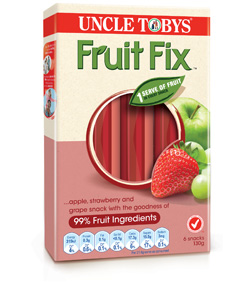 Drinking fruit juice is a nutritious way to get extremely fat. But juice marketers have us convinced that sugar that was once part of fruit is much healthier than sugar that was once part of sugar cane. We’re not entirely convinced. We still drink 3 litres of soft drink for every litre of juice. But that’s still 700ml of juice a week and growing at about 1.5 litres a year.
Drinking fruit juice is a nutritious way to get extremely fat. But juice marketers have us convinced that sugar that was once part of fruit is much healthier than sugar that was once part of sugar cane. We’re not entirely convinced. We still drink 3 litres of soft drink for every litre of juice. But that’s still 700ml of juice a week and growing at about 1.5 litres a year.
We love juice because it seems to defy mum’s first law of food: If it tastes good it can’t be good for you. And that’s because even though it’s yummy, it is stuffed with loads of vitamin C. Even the thickest nutritionist knows we all need that vitamin C, right?
Most plants and animals can produce all the Vitamin C they need. Unfortunately humans and other apes descended from tree-swingers never bothered to develop the necessary enzyme. This is probably because our prehistoric diet had plenty of fresh fruit and veg.
If you run low on Vitamin C, you will eventually die of scurvy. And if we are to believe the juice purveyors, we are all on the verge of expiring from lack of Vitamin C.
But do you know anyone that has died of scurvy? Me neither. That’s because it’s extraordinarily difficult to deplete your stores of vitamin C enough to achieve it. Pretty much the only way you’ll do it will be to lock yourself up on a sailing ship for 6 months. Even then you’d be pushing it. Captain Cook didn’t lose anyone to scurvy on his way over here and all he fed his men was pickled cabbage and salted meat. There were no stops at the mid-pacific juice bar for that lot.
According to the World Health Organisation, you would need to be totally deprived of Vitamin C for two months before you showed the first signs of scurvy. And even then all you would need to fix the problem would the amount of Vitamin C found in two tablespoons of baked potato (6.5-10 mg) a day.
The other major nutritional claims for fruit juices are that they are good sources of folate and potassium. And while both are important, anyone who eats bread, nuts, meat, fresh fruit or vegetables (well just about anything really) will be getting more than any fruit juice would ever deliver.
A glass of apple juice is no better for you than a glass of Coke. The average soft drink is 10% sugar and so is the average juice. And while the nutritional content claims are (vaguely) true, they are about as relevant as slapping “Asbestos Free” on the front of a bottle of Coke (no, this is not a suggestion).
Big Sugar is green with envy at people queuing round the block to buy sugar water from juice bars. Coca-cola tried to get in on the act and buy Berri, our biggest juice purveyor by a country mile. But the ACCC decided that wouldn’t be good for competition (it is, however, ok for a Japanese Brewer to own it).
And earlier this year, Coke got knocked back again when it tried to buy half the Chinese fruit juice market. I don’t know why they’re bothering. All they need to do is source their sugar molecules from fruit juice concentrate rather than cane, chuck in some multivitamins and, voila, healthy sugar water – oh wait – they’ve already thought of that: Glaceau Vitamin Water.
None of this is secret, so why does the government endorse juice as an alternative to fresh fruit? Why does the heart foundation hand out ticks to fruit juice makers? And why is juice promoted as a “green food” in school canteens?
In July, I asked the Queensland Deputy Premier and Minister for Health, Paul Lucas, why juice was endorsed as health food in schools. A flunkey immediately responded (at the end of September) letting me know that the Minister’s reply was awaiting signature and so, of course, I am still waiting. Maybe he forgot how to sign his name?
It’s time to knock the health halo off the head of the juice makers and place them firmly in the sugar-water category they have so successfully evaded. It’s time for governments to stop aiding and abetting the deception and its time kids were fed water at school instead of sugar-water dressed up as health food.
















Recent Comments